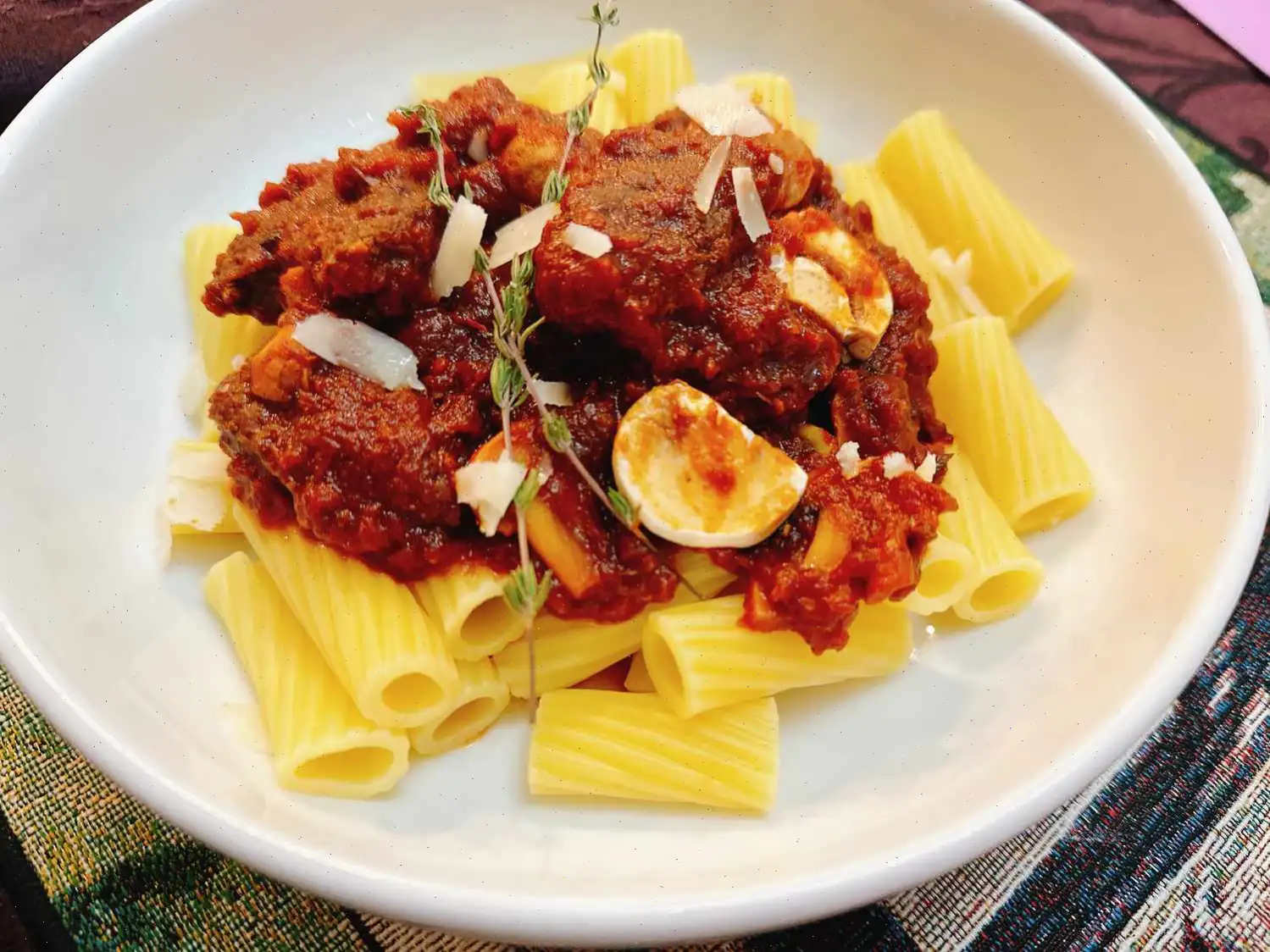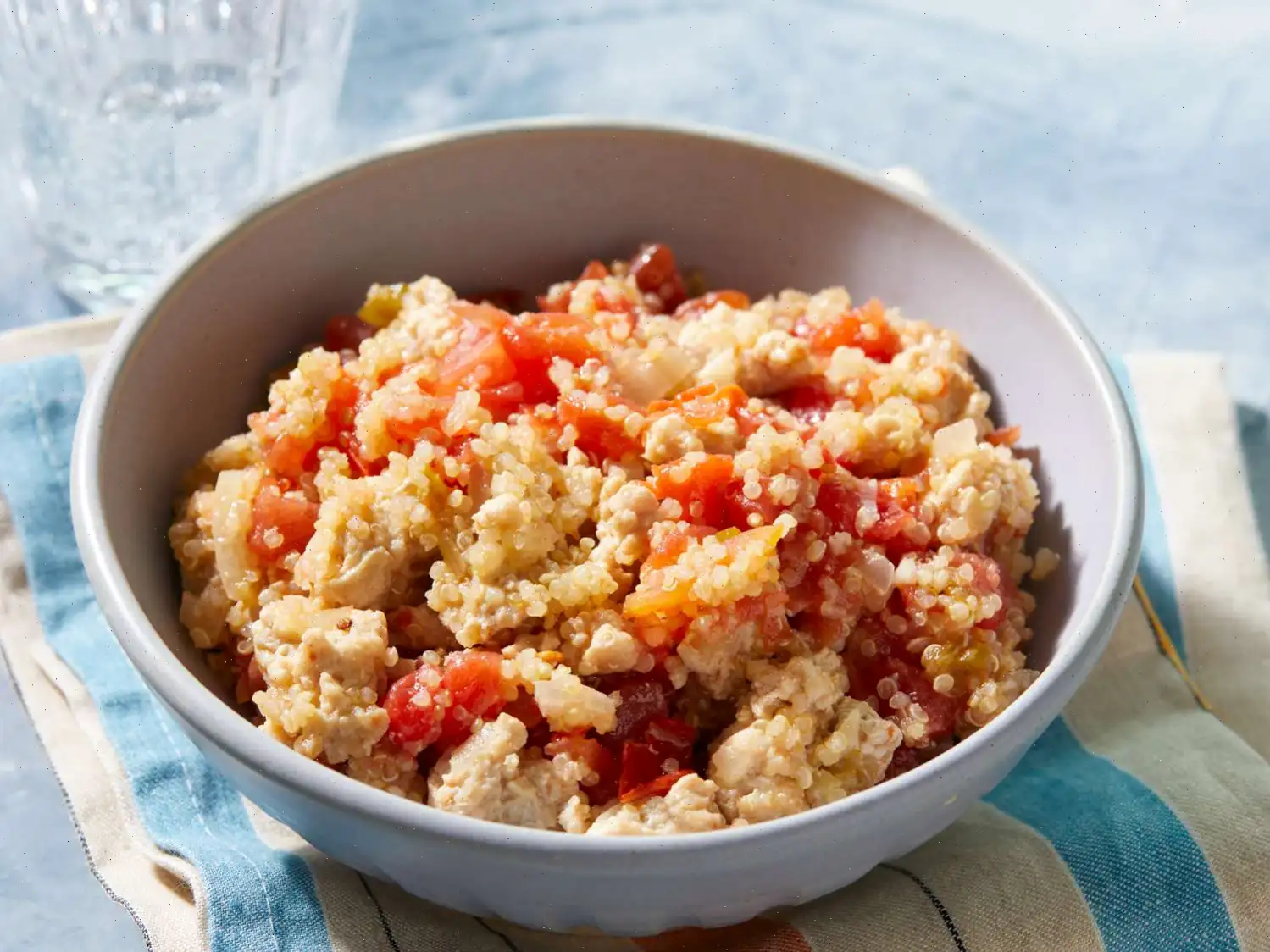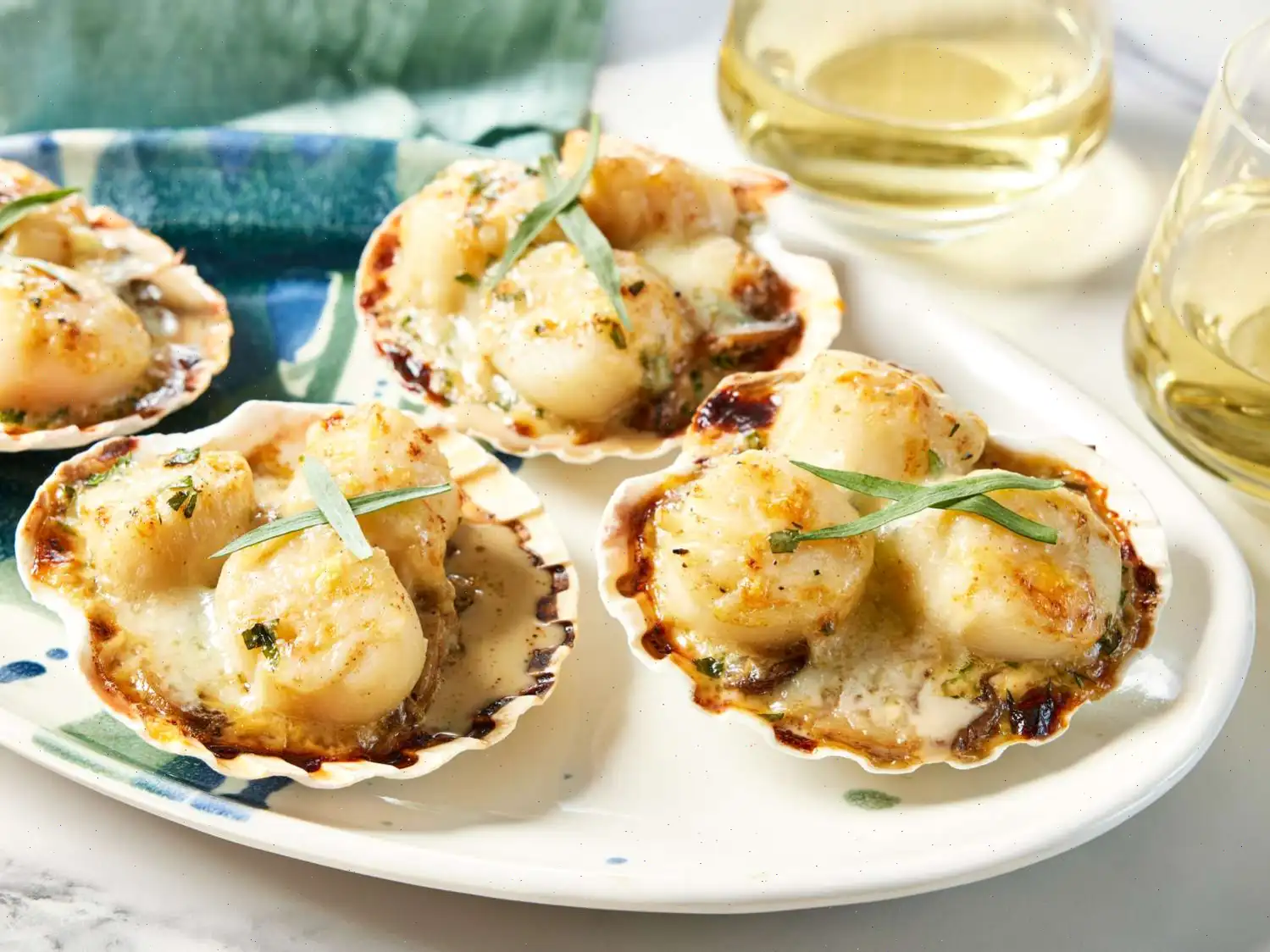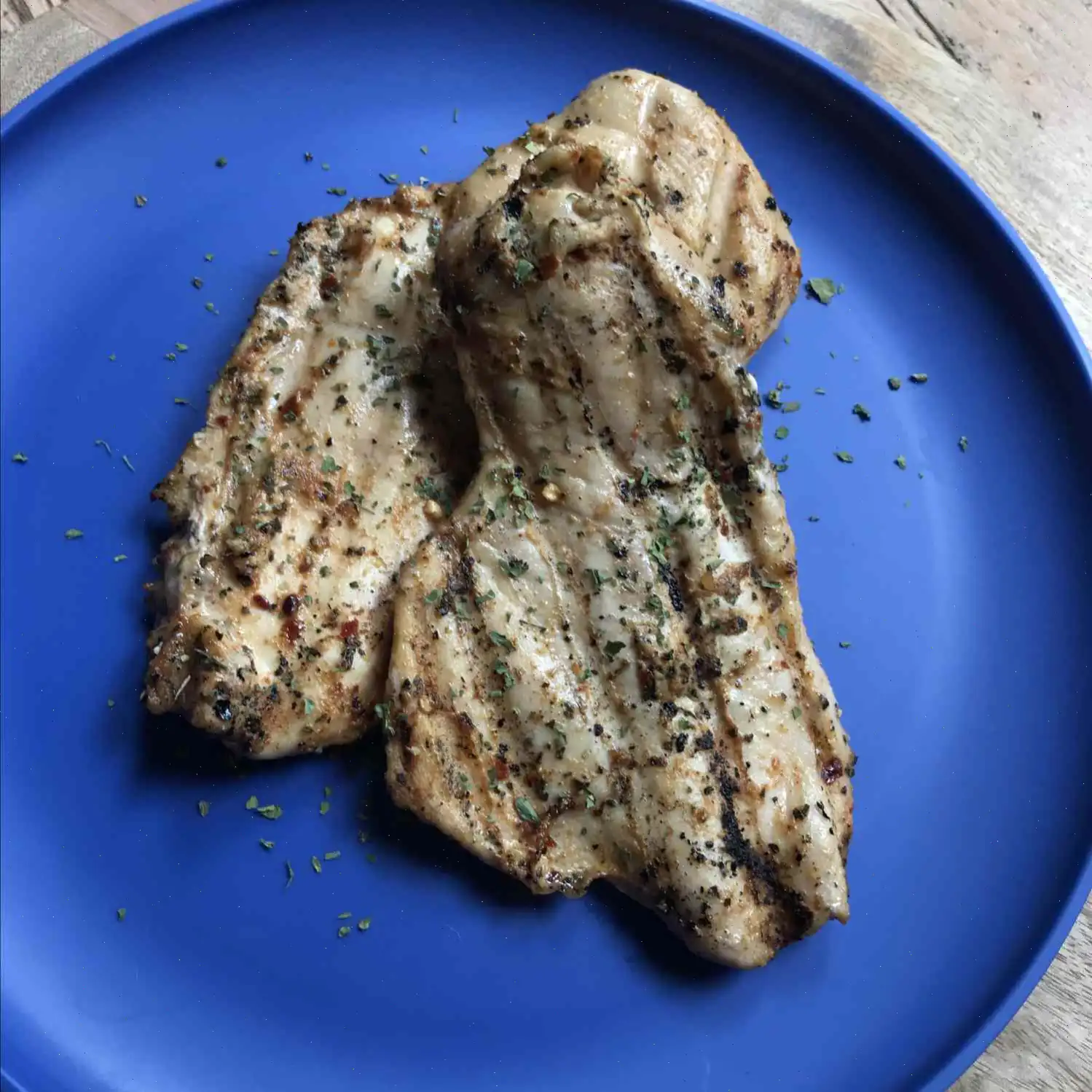
Miso Gochujang Beef Ragu Recipe
Ingredients
- 1 tablespoon olive oil
- 1 pound beef chuck roast, cut into 2-inch cubes
- 1 teaspoon Italian seasoning
- 1/2 teaspoon salt
- 1/4 teaspoon freshly ground black pepper
- 1/4 teaspoon crushed red pepper flakes
- 1 onion, diced
- 1 tablespoon minced garlic
- 1 tablespoon blond miso
- 1 tablespoon gochujang
- 1 (28 ounce) can crushed tomatoes
- 1/2 cup sliced button mushrooms
- 1 pound rigatoni pasta
- 1/4 cup half and half
- 1/2 cup shaved Parmesan cheese (optional)
- Thyme sprigs (optional)
Directions
- Heat olive oil in a deep, heavy skillet over medium heat. Sprinkle beef cubes with Italian seasoning, salt, and black pepper.
- Once the oil is shimmering, add crushed red pepper flakes and cook for about 45 seconds to infuse the oil with flavor.
- Add the beef cubes and cook, stirring occasionally, until browned on all sides, about 5 minutes.
- Add the diced onion and cook until softened, about 5 minutes.
- Stir in minced garlic and cook until fragrant, about 30 seconds.
- Mix in the miso, gochujang, and crushed tomatoes. Reduce the heat to low, cover, and simmer for about 2 hours or until the beef is fork-tender.
- During the last 30 minutes of cooking, stir in the sliced mushrooms.
- While the beef simmers, bring a large pot of lightly salted water to a boil. Cook the rigatoni in the boiling water, stirring occasionally, until tender but firm to the bite, about 12 minutes.
- Before draining the pasta, remove 1/2 cup of pasta water and set it aside.
- Drain the rigatoni and return the pasta to the pot. Add the half and half to the beef sauce and stir to combine.
- Season the sauce with additional salt and pepper to taste. If the sauce is too thick, add the reserved pasta water, a little at a time, until you reach the desired consistency.
- Divide the cooked rigatoni between individual serving plates and spoon the sauce over the pasta.
- If desired, garnish with shaved Parmesan cheese and thyme sprigs before serving.
Nutrition Facts (per serving)
| Nutrition | Amount | % Daily Value |
|---|---|---|
| Calories | 481 | 24% |
| Total Fat | 20g | 25% |
| Saturated Fat | 7g | 36% |
| Cholesterol | 80mg | 27% |
| Sodium | 892mg | 39% |
| Total Carbohydrate | 47g | 17% |
| Dietary Fiber | 6g | 20% |
| Total Sugars | 11g | - |
| Protein | 32g | 64% |
| Vitamin C | 18mg | 20% |
| Calcium | 104mg | 8% |
| Iron | 6mg | 32% |
| Potassium | 911mg | 19% |

Recipe Author: TheDailyGourmet
History and Origins
The origins of the beef ragu lie deep within the culinary traditions of Italy, where rag is a slow-cooked meat sauce typically paired with pasta. Traditional rag is most commonly made with ground beef, pork, or lamb, simmered with tomatoes, herbs, and sometimes wine. However, the Miso Gochujang Beef Ragu is a fusion dish that draws inspiration from two distinct culinary cultures: Japan and Korea. The introduction of Japanese blond miso and Korean gochujang adds a savory, umami depth and spicy kick, creating a unique twist on the traditional Italian sauce.
Regional Variations
While rag is most famously associated with the city of Bologna (as in the iconic rag alla Bolognese), this Miso Gochujang Beef Ragu brings in ingredients that are staples in East Asian cooking. Miso, made from fermented soybeans, is a cornerstone of Japanese cuisine and is often used to enrich broths and sauces. Gochujang, a fermented chili paste from Korea, is known for its bold and fiery flavor. These regional ingredients give this ragu a distinct flavor profile, marking a departure from the more familiar Italian versions.
How it Differs from Similar Dishes
What sets the Miso Gochujang Beef Ragu apart from traditional Italian rags is its fusion of flavors from different parts of Asia. Traditional rags tend to focus on the rich, meaty flavors of beef simmered in tomatoes, often accompanied by a subtle sweetness and herbs. In contrast, the addition of miso introduces a savory umami taste that balances the spiciness of the gochujang. This makes the sauce more complex and layered, with an interplay of sweet, salty, spicy, and umami notes that you dont typically find in classic Italian rags.
Where It's Usually Served
The Miso Gochujang Beef Ragu can be served in a variety of settings, but its particularly popular as a hearty dinner dish. It is ideal for family meals, casual get-togethers, or dinner parties where you want to impress your guests with something innovative. The dish pairs beautifully with pasta, especially rigatoni, which holds the sauce well. While it retains the traditional pairing of pasta and meat sauce found in Italy, its unique flavor profile makes it a great option for adventurous eaters who enjoy the bold flavors of East Asian cuisine. It can also be served over rice or with crusty bread to soak up the savory sauce.
Interesting Facts
- Despite being traditionally associated with Italy, rag has many variations across the world, including in France, Spain, and Greece, each with its own unique ingredients and preparation methods.
- Blond miso is the mildest form of miso, often used for soups and sauces. It has a sweet and subtle umami flavor that pairs well with other ingredients without overpowering them.
- Gochujang is a staple in Korean cuisine and is used in a wide variety of dishes, from stews to marinades, and even as a condiment. Its unique balance of spice and sweetness makes it perfect for adding complexity to sauces.
- Rag has been a part of Italian cuisine since the 18th century, with the modern version we recognize today originating in the city of Bologna.
- This fusion recipe is a great way to introduce more people to the flavors of miso and gochujang, offering a delicious bridge between Eastern and Western cooking traditions.
You can listen to this recipe in AI audio format. Simply click the play button below to listen to the content in a format that suits you best. It’s a great way to absorb information on the go!








